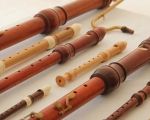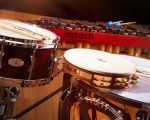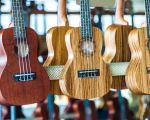How to Properly Store Your Musical Instruments for Long-Term Preservation
- 1. Why Proper Storage Matters for Musical Instruments
- 2. Best Storage Methods for Different Types of Musical Instruments
- 3. The Importance of Climate Control in Storing Instruments
- 4. Using Protective Cases to Safeguard Your Instruments
- 5. Common Mistakes to Avoid When Storing Instruments
- 6. Real-Life Examples of Effective Musical Instrument Storage
1. Why Proper Storage Matters for Musical Instruments
Whether you're a professional musician or a hobbyist, storing your musical instruments properly is crucial to their longevity. Instruments are often expensive and delicate, and improper storage can lead to costly damage. From warping wood to rusting metal, failing to protect your instrument can shorten its lifespan and affect its sound quality. In this guide, we will delve into how to store musical instruments in a way that preserves their condition and keeps them performing at their best.
2. Best Storage Methods for Different Types of Musical Instruments
Each musical instrument has its own set of storage needs. For example, a string instrument like a violin requires a different environment than a brass instrument like a trumpet. Below, we’ll explore the best storage practices for a variety of instruments:
- String Instruments: Violins, guitars, and cellos should be kept in cases that offer support to their delicate frames. Hanging them on a wall can cause warping or neck damage. It's essential to store them in a dry, cool place away from direct sunlight.
- Woodwind Instruments: Flutes, clarinets, and saxophones should be stored in padded cases to prevent any bends in the delicate keys. Ensure that they are cleaned and dried after use to prevent moisture from causing corrosion.
- Brass Instruments: Trumpets and trombones should be kept in padded cases as well, but with special attention to the valves and slides. Brass can tarnish, so regular polishing and storage in a dry, temperature-controlled environment are crucial.
- Percussion Instruments: Drums and other percussion instruments require storage in a space that avoids temperature extremes. Keep drum heads free from tension and avoid stacking items on top of your instruments.
3. The Importance of Climate Control in Storing Instruments
One of the most critical factors in storing musical instruments is controlling the environment. Humidity and temperature fluctuations can wreak havoc on instruments, especially wooden ones. For instance, a guitar left in a hot car can cause the wood to crack, while a flute in a humid room can suffer from corrosion.
For optimal storage conditions, aim for a room with controlled humidity (ideally between 40-60%) and stable temperature (around 65-75°F). Consider investing in a humidity control system or dehumidifiers for rooms that experience drastic climate shifts.
4. Using Protective Cases to Safeguard Your Instruments
One of the easiest ways to protect your musical instruments is by investing in high-quality protective cases. These cases provide a safe barrier against dust, temperature changes, and physical damage. There are several options to choose from depending on your instrument:
- Hard Cases: For the best protection, hard-shell cases are a must. They protect against impacts and offer better insulation from environmental factors.
- Soft Cases: These are ideal for instruments that are not as fragile and for musicians who travel frequently. Soft cases typically offer less protection but are lighter and more portable.
- Specialty Cases: Some instruments, like pianos or large percussion sets, may require specialized cases or covers. Always opt for something designed for your specific instrument type.
5. Common Mistakes to Avoid When Storing Instruments
Many musicians make common mistakes when storing their instruments that could lead to damage. Some of these include:
- Storing instruments in areas with high humidity or extreme temperatures.
- Not using protective cases or covers, exposing instruments to dust or physical damage.
- Leaving instruments out of their cases for long periods, which can cause them to warp or become misshapen.
- Using the wrong cleaning materials or techniques, which can damage delicate finishes or parts.
6. Real-Life Examples of Effective Musical Instrument Storage
Real-world examples can provide valuable insight into how proper storage works in practice. For example, a professional guitarist shared his experience of keeping his high-end guitar in a climate-controlled room with a humidity monitor. Over the years, he noticed that his guitar stayed in pristine condition, even after frequent use. Another musician, a trumpet player, shared how using a custom hard case helped protect his instrument from the rigors of touring and kept it sounding as good as new.
As these examples show, the right storage techniques and tools can significantly extend the life of your musical instruments, ensuring they remain in top-notch condition and ready to perform whenever you are.
If you're looking for high-quality instrument storage solutions, consider investing in reliable protective cases and climate control systems. Explore the options available and keep your instruments safe for years to come. Click here to browse our latest collection of musical instrument storage products!








